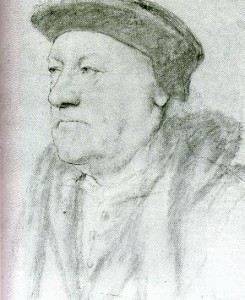 In his book “The Life and Death of Anne Boleyn”, Eric Ives writes that just a week after Anne’s arrest, Cromwell had gathered enough evidence to move forward and start the judicial process and that there was “the need to end matters speedily.”1 On Tuesday 9th May 1536, Henry VIII wrote to Cromwell “commanding him to repair to the King to treat of matters relating to the surety of his person, his honor, and the tranquillity of the realm”2 and on the same day the King summoned a group of noblemen and gentleman to a Council meeting at Hampton Court. Alison Weir, in “The Lady in the Tower, has no doubt that this meeting’s purpose was to discuss the findings of the commissioners in relation to Anne Boleyn and the five men and to move things forward.3
In his book “The Life and Death of Anne Boleyn”, Eric Ives writes that just a week after Anne’s arrest, Cromwell had gathered enough evidence to move forward and start the judicial process and that there was “the need to end matters speedily.”1 On Tuesday 9th May 1536, Henry VIII wrote to Cromwell “commanding him to repair to the King to treat of matters relating to the surety of his person, his honor, and the tranquillity of the realm”2 and on the same day the King summoned a group of noblemen and gentleman to a Council meeting at Hampton Court. Alison Weir, in “The Lady in the Tower, has no doubt that this meeting’s purpose was to discuss the findings of the commissioners in relation to Anne Boleyn and the five men and to move things forward.3
According to the Baga de Secretis (now held in the National Archives), the 9th May was also the day that the justices of the King’s Bench at Westminster ordered the sheriffs of London “to assemble the next day a grand jury of “discreet and sufficient persons” to decide prima facie on the offences alleged at Whitehall and Hampton Court.”4 According to Eric Ives, the sheriffs were able to make a list of 48 men, the majority of whom turned up on the 10th May at Westminster.
Tomorrow, I will discuss what happened at that meeting.
Notes and Sources
1 – The Life and Death of Anne Boleyn, Eric Ives, p338
2 – LP x. 833, Henry VIII to the Earl of Essex (Cromwell), Westminster, 9th May
3 – The Lady in the Tower: The Fall of Anne Boleyn, Alison Weir, p179
4 – The Life and Death of Anne Boleyn, Eric Ives, p338
Sketch of Cromwell from www.marileecody.com